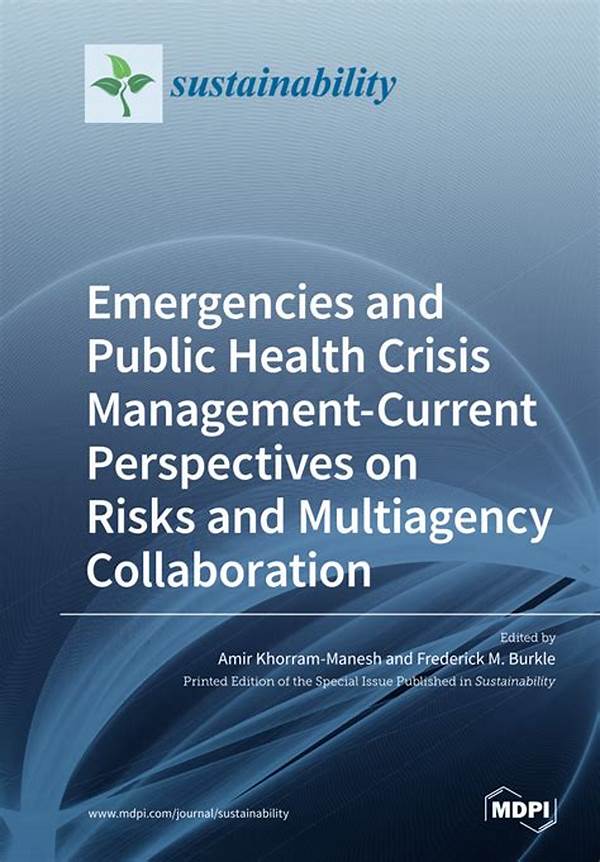
Public Health Crisis Management Approaches
- Daniel Anderson
- 0
- Posted on
In the rapidly evolving world we live in, managing public health crises effectively is crucial. Whether it’s a pandemic, natural disaster, or a public safety threat, having robust management approaches can make all the difference. A blend of preparedness, rapid response, and adaptability forms the cornerstone of these strategies. Let’s dive deeper into the essential frameworks of public health crisis management approaches.
Read Now : Protecting Vocal Health Tips
The Core of Public Health Crisis Management
Public health crisis management approaches are all about staying on top of the game. Imagine you’re navigating through a storm; well, that’s exactly what these strategies aim to do during a crisis. You want to have a solid plan but also the flexibility to adapt when things go haywire. This means having systems in place to detect potential threats, having a communication plan that keeps everyone in the loop, and having resources ready to deploy at a moment’s notice. Public health crisis management approaches are designed to minimize impact and save lives by being one step ahead of whatever comes our way.
When we chat about public health crisis management approaches, we’re also looking at the need for cross-functional collaboration. It’s not a solo gig; it’s about bringing together experts from different backgrounds. We’re talking epidemiologists, first responders, policymakers, and even the local communities. The magic happens when these groups work together seamlessly, sharing information and resources. This unity can significantly enhance the response to crises and ensure a more effective management process.
Another key piece of the public health crisis management approaches puzzle is education. It’s not enough to just handle a crisis as it happens. Part of being prepared includes educating the public on preventive measures and response plans. This helps create a well-informed community that can act quickly and calmly when a crisis occurs. After all, knowledge is power, and it’s a crucial tool in managing any public health threat.
Key Elements in Crisis Management
1. Preparedness: It’s about having your ducks in a row before trouble hits. That means training, resources, and a killer plan. Public health crisis management approaches revolve around robust preparedness.
2. Communication: It ain’t just talking; it’s about clear, effective messaging. Everyone needs to be on the same page in public health crisis management approaches.
3. Response: When things go down, you gotta act fast. The quicker, the better. Public health crisis management approaches prioritize swift and decisive action.
4. Recovery: Picking up the pieces and getting back to normal. It’s a big part of public health crisis management approaches.
5. Evaluation: Looking back and figuring out what worked and what didn’t. It’s all about learning and improving for the next time in public health crisis management approaches.
The Role of Technology in Managing Crises
Tech is the unsung hero in public health crisis management approaches. Think about it—real-time data, predictive modeling, digital communication platforms—all these play a vital role. They help in monitoring and forecasting potential threats, enabling authorities to respond quickly and accurately. With these technological tools, the precision and timeliness of public health crisis management approaches are significantly enhanced.
Read Now : Biological Basis Of Alcoholism
In today’s digital age, public health crisis management approaches leverage technology to facilitate better coordination and communication among stakeholders. Digital dashboards, mobile applications, and automated alerts keep everyone informed and engaged. This means faster decision-making and more efficient use of resources. It’s like having a super-smart assistant who’s always ready to lend a hand when you need it the most.
Building Resilient Communities
Building resilient communities is a principal goal in public health crisis management approaches. A resilient community can withstand and bounce back from crises effectively. This involves not just government action, but also active participation from community members. Awareness programs, training sessions, and drills are part of making sure everyone knows what to do when disaster strikes. Resilience is born out of preparedness and unity.
Community engagement is vital in the realm of public health crisis management approaches. Communities that work together have a stronger chance of weathering storms. This involves transparent communication, collaboration across different sectors, and consistent public education efforts. By fostering resilience, communities can mitigate the impacts of crises and rebound more robustly.
Challenges in Implementing Crisis Management
Public health crisis management approaches often face numerous hurdles. The unpredictable nature of crises means that even the best-laid plans can be thrown off-course. Funding constraints, political dynamics, and logistical challenges are common barriers. However, the biggest challenge often lies in communication. Getting accurate information to everyone in a timely manner can be tricky, especially if misinformation is spreading.
Another sticky wicket in public health crisis management approaches is coordination. When a crisis hits, everyone’s got their job to do, and sometimes those roles can overlap or clash. Ensuring that all parties involved, from local authorities to international bodies, are working cohesively requires robust coordination mechanisms. Aligning objectives and actions can significantly improve the efficiency of crisis response efforts.
Public trust is another challenge in applying public health crisis management approaches. Ensuring that the public has confidence in the measures being taken is essential. This means transparent communication and consistent engagement. Building that trust beforehand ensures that when a crisis hits, people are more likely to cooperate and follow guidelines, which is crucial for effective crisis management.
Conclusion
To wrap it up, public health crisis management approaches require a concerted effort. It’s a blend of readiness, rapid response, and recovery. These approaches involve various sectors working together, employing technology, and empowering communities to build resilience. Facing challenges head-on with robust strategies and collaboration can pave the way for more effective management of public health crises.